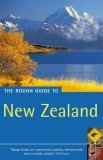
Oyster Pool
Wai-O-Tapu, Rotorua, May 2006
Below Frying Pan Flat is an eruption crater with an unstable floor. The pool is characterized by lots of bubbling hot springs and fumeroles. The water flows from the Champagne Pool, crosses this Frying Pan Flat to emerge as a stream that flows into Lake Ngakoro.

Frying Pan Flat
Wai-O-Tapu, Rotorua, May 2006
Below panorama was composed from 6 photos. From the right, the water flows from the Frying Pan Flat, tumbles across the rocks and ends as Lake Ngakoro Waterfall which empties into the green waters of Lake Ngakoro, The Grandfather. Lake Ngakoro covers about 12 hectares and was formed after an eruption about 700 years ago. Notice the rough rock edges along the stream as well as the rocks littering the edge of the lake.

Lake Ngakoro Waterfall
Wai-O-Tapu, Rotorua, May 2006
It was raining and misty on my day of visit last May. I will surely revisit Wai-O-Tapu to see it in bright sunny weather when its brilliant colours are at their best. The thought of my next vacation to New Zealand gets me excited again! Look out for my next posting as I will introduce another interesting place in Rotorua.



















































